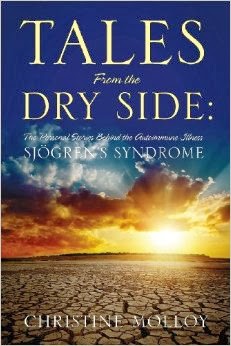As many of you know, I have this amazing dog named Molly. She is a 13 year old (14 in two months!) basset hound/black lab mix who I adopted from a local shelter with my ex-husband back in 2003. She and I have been through it all together: serious illness, a divorce, a job loss, loss of another pet for me and serious illness, severe separation anxiety, a divorce, and the loss of a dog brother for her. Through it all, we have been constant companions.
Molly is different now than she used to be and the change happened sometime around the time I got divorced and moved into my own place with her. She used to be the hyper one, not especially affectionate, and always wanted her own way. She still wanting her own way, but the move changed her. At first, it was for the worse. The separation anxiety she experienced was bad enough that she almost hurt/killed herself trying to go through a window when she was home alone, I was renting at the time and my landlords were not appreciate of her constant howling and barking every single time I left the house. It was a hard time for me as well, because I was disabled and even getting to doctor’s appointments was a struggle, because I didn’t know what I would come home to.
It took a long time, but we worked it out. A year of behavior modification and psychiatric medications, as well as visits to a dog shrink at Tufts University, got us through the bad parts. Not to mention several kind and compassionate friends and family who would watch her for me during the rockiest of times.
I will be honest. I almost gave up on her during this period of time. My own physical needs were so extensive at the time that I didn’t know how I was going to mange the severe separation anxiety because I obviously had to leave the house. I remember one afternoon, I came home to find her panting and in so much distress. The apartment was torn apart. I sat on the floor with her and cried. Then I google searched basset hound rescues and found the one I was going to call.
I never made the call.
And from that point on, that is when the change happened. She was completely and utterly devoted to me. It’s almost like she knew…
A year later, Molly, who was about 8 years old, started to have multiple medical problems. The vet bills mounted up and the care she needed increased. The most notable incident was the day I came home from a friend’s funeral to find that she couldn’t get up and down the stairs and cried every time she tried to move. I still vividly remember the pain in my heart upon hearing her cry like that. It sounded like she was being tortured and I had never seen her react to pain at all, never mind as if someone was beating her.
Several days of hell ensued. Multiple vet/E.R. appointments got us nowhere. Then the day after Christmas, I realized she was almost completely paralyzed. I was able to get a hold of a supervisor in the E.R.who said she read what happened when Molly was brought in and I was to put her in a car immediately and rush her to the MSPCA Angell Boston Animal Hospital, two hours away. Because of my own limitations at the time, I had to call a friend to get her in my car for me. We drove to Boston, during a major winter storm. I honestly thought we might not make it there in one piece. I also knew that I had to try and get her there.
She received the best possible medical care there. After a lot of tests, I was told that she had a ruptured lumbar disk in her back and that was why she was paralyzed and couldn’t go to the bathroom correctly. I was told that a $5000 surgery was needed and it was thought that the surgery would help her walk again and get rid of her pain, but there were no guarantees. Even if the surgery accomplished all this, she would most likely be incontinent of urine and stool the rest of her life. I could do the surgery, or have her put to sleep. The decision was mine.
I don’t know if words can adequately express the agony in making that decision. The only financial resources I had at the time was some money from the sale of my house during my first marriage. But, I was also on disability and that was the only money I had in the world to fall back on. Taking $5000 out of it could have serious consequences for me in the future. I also wanted to do what was best for Molly. I didn’t want to prolong her life if it meant a life of pain and suffering. Would I even be able to care for her long-term? The aftercare from the surgery alone would be incredibly difficult.
I remember my boyfriend at the time (my now husband) just holding me and letting me cry. I prayed a lot. I decided to go ahead with the surgery.
Molly came home several days later. She was never incontinent after the surgery and made a full recovery. The doctors were astounded. I know we were lucky. We trudged through the following few weeks of her recovery together.
The years since that day I made that difficult decision have been a blessing. I got married. Molly took really well to my new husband and once we moved into his home, she rarely ever had separation anxiety issues. She remained my constant companion. She continued to be by my side during several medical crises. She kept me company during those long days and weeks when I couldn’t get out of bed and my husband was at work all day. She was my emotional healer.
It has been an interesting experience watching her age, and a precious one at that. I’ve never been responsible for a senior dog before and I will say, I treat it as a privilege. I watch her get grayer with each passing week. I see how drastically she has slowed down in the past year or two. No more one hour walks romping through the park. No more play dates at the dog park because it is just too much for her. We have to be vigilant about keeping on top of her pain medications and some other health issues, especially as the arthritis continues to progress from her back surgery all those years ago. I have made a commitment to her that when she is ready to go, I will not prolong her life.
I will not let her suffer.
Mother’s Day passed by recently and I was so appreciate of the dog mom friends I have on Facebook who were so happy to claim themselves as dog moms with all the different memes. I never had children of my own and Molly has helped fill the maternal need that I have. I have taken some crap about that and heard all the jokes, but really, it is serious business. She instinctively knows when I am suffering, either physically or emotionally. She acts in ways that make my husband and I laugh so hard, we can make a whole evening of it. She gives and gives and gives to us every day, expecting nothing in return. Sometimes society, and the people in it, judge how we love. They say there is no love like the love between a mother and a child. Or you have not truly loved unconditionally unless you have a partner or a spouse,
No, love is love. We each get to define it for what it is and for how we feel it.
I had an opportunity this week to talk to someone about Molly. A person who doesn’t know her. I explained to her that it is a love like I have never known. It’s not better or worse than the love I have for my husband or say, my parents, but it is very different. It is the fierce, protective love that is demonstrated by putting her needs before my own and trust me, it has happened many times. It is a quiet, unconditional love that has no rules; no boundaries, no expectations.
It is a love of true acceptance.
Up until recently, I was sometimes afraid to love Molly over the past two years. I knew she was getting towards the end of her days and I thought the pain of the loss would be more than I could bear. A few things happened to change that. I started leaving situations out of my control in God’s hands. I realized that I could make more out of the time we do have left. I would also see profiles on dog rescue sites of elderly dogs abandoned by their owners, because they could no longer care for them. Dogs who have multiple health issues. Elderly dogs who get treated in many ways similar to elderly people in this country-like they are disposable.
I made the very difficult decision this week to have Molly put under anesthesia to get her teeth cleaned. It was a difficult decision because of her age, a heart murmur and a new found problem with one of her liver tests.There was some concern though that two of her teeth were very bad and maybe causing her pain, Some of those in my life disagreed with my decision, but I was OK with that. I made my decision based on my promise to her: that I would not let her suffer, no matter what. If it was God’s will to take her during the procedure, then she would go peacefully, with no more pain.
The procedure ended up being twice as long and twice as difficult as anticipated. Seven teeth had to be extracted, as well as some root work that included a bone graft. A biopsy also needed to be performed. She is now recovering well and while I am grateful, I am not really surprised. She’s a fighter that one. And now, she will live whatever time she has left without pain.
And we will love her just as much as ever.

